Let's Tessellate!
Students practiced a basic translation method to develop their own tessellation shapes from regular polygons (square, triangle, or hexagon). They should continue to work on designing their tessellations at home over the course of the next few weeks. We will share our final designs in class in the coming weeks, and it is my hope that we can turn one or more of these tessellations into a design for Mosaic Freeschool t-shirts! Very fitting, don't you agree? (<:
It's a (problem) festival! This week in Creative Thinking, we took some time to sit back and play some games! We kicked off the morning with a little dice magic. Please ask your student to show you the "dice trick." I'd love to find out if they remember the solution and can pull off the presentation. Please share any stories! We then tried to guess how many handshakes there would be if everyone in the room shook hands with one another. We got some pretty interesting predictions and even though none were correct, we were able to walk through the problem and work through to a solution. We spent the last 45-minutes of class playing five different strategy games courtesy of ThinkFun. We played Ducks In A Row, Nim, Star 29, Pig & the Fence, and Dodge 'Em. All games, plus a few more, are available at the link, if you are interested. For work at home, I handed out a Sudoku Puzzle Challenge, which is more difficult than the one provided earlier in the semester. There are two puzzles, both are optional. I would like students to come to class next week with an answer to The New Star Puzzle. If you need the handout, it is located here (scroll down to second half of page), along with dozens of wonderful printable puzzles should your student be left begging for more. See you next week! We use curriculum from Art of Inquiry, LLC The Tree Gap News Team!  We wrapped up our discussion of Tuck Everlasting this week with a "live" news broadcast of breaking stories from the investigative reporting team of the Tree Gap News. Students read aloud the news articles they had written and based on exciting incidents from the book. They did a great job including facts from the story, along with their own creative twists. We talked about the value of developing good public speaking skills, and worked on reading the articles with strong voice projection and clear articulation (and of course, a fair bit of drama!) And Our Next Book Selection Is...  Students will now begin reading Ben and Me by Robert Lawson. This is a delightful tale of Benjamin Franklin's life and work, told through the eyes of his clever mouse companion, Amos. As a work of historical fiction, it will allow us to explore the ideas, inventions, and discoveries of one of America's most famous and inspiring men; all from the perspective of a most witty and amusing mouse! Students should read the Forward and Chapters 1-4 for next weeks class discussion. Homework sheets were sent home.  This week we also began "What's the Big Idea, Ben Franklin?" as a read-aloud in class. This is a short, engaging biography meant to provide the students with an introduction and further background information on Franklin's life. We will continue reading this book together in class, as we discuss Ben and Me and work on related in-class projects. Happy Reading! See you all on Monday. Since we are nearing an important deadline for our December issue of "The Mosaic Monthly," I wanted to get a class summary and re-cap to our students as soon as possible. Please let me know if there are any questions. Today we discussed why research is essential, where information can be found, and how do we ask the right questions to get the information we need. Each student completed a handout titled "Research Notes." I asked the students to choose one of their three sub-topics they had prepared for their in-depth, and to list the basic facts (the 5 W's and H). This should assist your student in composing the lead paragraph of his/her article. Next, we tried to list five questions that need to be answered about the sub-topic and if possible, another five questions that could be asked about the story. These are separate from interview questions and should help the student compose the body of the article. We then broke into our three groups from last week, shared all questions, and with my help, settled on the three most compelling. These three most compelling questions do not need to be stated within the article, rather the questions are a vehicle to help the writer address the topic they are researching. This week, writers should interview their sources and write their in-depth article using the "Research Notes" as a guide. We also discussed how to use attribution in a news story. They should now be familiar with how to use quotes, paraphrasing or a combination of both. Their in-depth articles will need to incorporate the elements of interviewing, research and attribution. A tall order, but I'm confident they will deliver. All in-depth pieces should be brought to class next week. We'll read them and vote as a class on which one will appear in the next issue. I will also be selecting a second piece that will not be revealed until publication! Investigative Reporting As a side discussion, we delved into a little history lesson on the Progressive Era in the United States (c. 1890 - 1920). This era was known for its "muckraking" journalists and was responsible for bringing to light the plight of the immigrant population in New York City. Known as the "father of photography" Jacob Riis used his photographic and journalistic talents to shed light on the quality of life in the slums. We viewed three Jacob Riis photographs (similar to the one at left) and each student wrote a news article that might have appeared in a Progressive Era paper using the photograph as the only source of information. Students were initially very intimidated by this exercise, but when we shared our individual stories, I was impressed by the level of creativity but adherence to realism and proper news story creation. I think we may be getting somewhere! :>) Deadlines!!!In addition to the in-depth article, students should bring in a typed or very neatly written first draft of their article for the December issue, if your student is responsible for writing one. The first priority is the article for the paper, the second priority is the in-depth, however, I would like to see both done and handed in by Monday, December 3rd.
On 10/22, we tackled several Distribution Dilemmas. These are problems that require the student to think beyond the boundaries suggested by the problem, to reach a not-so-obvious solution. Specifically, we looked at a couple of inheritance puzzles which required the use of unit fraction proportions to determine how to divvy up sheep left by a shepherd to his children. It was a good review of basic fraction calculations for most students, and pushed them to think of a creative way to resolve the dilemma of having proportions that do not add up.  We then played an Iterated Sharing game, involving....Candy! Everyone sat in a circle and candy was distributed randomly to each person, though all were given an even number of pieces. A reserve supply was placed in the middle of the circle. At each iteration, students gave half their candy to the person on their left, and recieved a supply of candy from the person on their right. We then recounted our individual totals. If you had an odd number, you take a piece from the reserve supply to boost your pile back up to even, and everyone iterates again. I asked students to contemplate what would happen if we continue to perform this maneuver again and again. Will everyone's supply grow without bound? Will the distribution stabilize at some point? Will any pattern emerge? Is it possible to even predict the result? Interestingly, most students initially thought their piles would grow unbounded (or perhaps that was wishful thinking!). However, once we stepped through a few iterations, it started to look like the piles were beginning to even out, and students changed their predictions. At the beginning of the game, we noted the students with the largest and the smallest number of pieces before any iterated sharing began. At the conclusion of the game, everyone had the same number of pieces and we discussed how we can determine an upper and lower bound on the amount of candy simply by noting the largest and least initial amount received. The fact that we continued to halve, pass, and then even out our piles forces the distribution to stabilize. No matter what the initial distribution of candy or how many people are in the circle, the distribution will eventually equalize. This exercise was a great introduction to the basic concepts of computer simulation and modeling. And, as luck would have it, a hurricane called Sandy was brewing out in the Atlantic, and soon would provide a real-life example of just how important simulation and prediction can be! On 11/12 we met after two weeks of cancelled classes due to the hurricane aftermath. I took the opportunity to explain the basics of hurricane prediction and the use of 3-D global and regional climate simulation models. The basic iterated sharing game with candy had laid some groundwork for understanding how scientists develop and run simulations to model highly complex physical processes, such as weather. We also began work on our on-going class project affectionately known as, The Popcorn Problem. I have split the class into two teams and challenged each to determine how much popcorn it would take to completely fill our classroom. For the past few weeks students have been measuring the classroom dimensions, estimating the size of popcorn, and developing a plan for determining their solution. More to come on this strange and tasty endeavor! 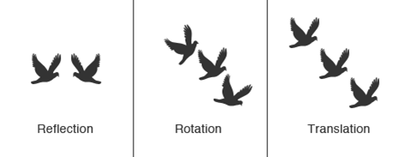 For our class on 11/19, we shifted gears to focus on concepts of geometry and Symmetry. We looked at imagery of all the myriad places we find symmetry in our world - art, architecture, nature (animals, plants), music, dance, etc. and learned about the three main types of symmetry - reflection (mirror), rotational, and translation. Students then worked problems to find all the lines of symmetry in regular and irregular polygons, played around with decoding messages in mirrored text and worked on creating their own mirrored codes. The most challenging work was sent home with them - finding congruent halves in shapes that contain a combination of reflection, rotation, and translation symmetry. Students must be able to visually see how to flip, turn, and/or slide one figure so that it fits exactly onto the other congruent half in order to solve these problems. We will continue our look at geometric properties in our next few classes as we discuss tessellations and fractals. On Monday, our Early Elementary students learned about the different habitats we will find in our study of New Jersey. The children were able to tell us about these habitats in their own words: Animals live in habitats. They need food, and they need to be safe. They all need water to drink. Some animals need water to swim in. Animals need to be in the right temperature. Some need big space and others live in small homes.
Since many of our families are traveling for the Thanksgiving holiday, I wanted to post this week's assignment as quickly as possible. We are going to take two weeks to write an "in-depth" article; this week will be the preparation stage for what will eventually become your student's in-depth.
Today we talked about why it is important to reach beyond our personal experiences and write about things that might be unfamiliar to us and out of our comfort zone (it challenges us, we learn something new, we need to learn how to write about bigger issues). Each student listed one thing that makes them angry, one thing that makes them happy, one thing they heard other students or adults discussing this week, one thing their family discussed this week, and one thing they don't understand. We formed three teams that compiled individual answers into a central list. We then eliminated any topics that we did not think were right for our paper. Each student then chose one topic from their group's list and formed a broad question about that topic. From there, each student prepared a two - three sentence rationale for why this topic should be covered in our next issue, along with three sub-topics that will eventually help them develop their main story. An important part of in-depth reporting is interviewing sources. Students wrote down at least three sources they could potentially interview regarding their topic. Homework for next week is to type (or neatly write out) a proposal for their in-depth. It should include:
Next week we will share our questions with our groups for critique and discuss research and reporting. We finished up the day with a mock interview session involving a fictitious spill in a chemistry lab in a theoretical middle school and played a round of J-Jargon Challenge. Good work, everyone! Have a great Thanksgiving week! Today's lesson focused on lateral solutions. What is a lateral solution, you ask?
Lateral solutions involve problem solving through an indirect and creative approach, using reasoning that might not be immediately obvious or requires us to put aside our unstated assumptions to arrive at an alternative answer. We started the day by walking backwards into our classroom, solved mazes backwards and played reverse tic-tac-toe (the person who gets three in a row loses!) I handed out a two page homework sheet with different lateral thinking puzzles. If you have time this week, have your student work on them. We'll discuss the answers in class next week! Also, here are this week's "fun links":
Finally, two of our students shared some fantastic snowflakes that resulted from our symmetry class last week. Good work, guys!  Next Monday, November 26, the Drama Club and the Strategy Games Club will spend the first several minutes of club time evaluating whether or not the goals they established on the first day of class have been met. Students will assess what the next steps should be in order to accomplish their original goal, or amend their goals as appropriate. We are also soliciting ideas from our parents for club ideas for next semester. If there is an area of interest your student might like to further explore, please feel free to leave a comment here, or email us at [email protected] or [email protected], perhaps we can work it into a club idea for the spring! The Art of Debate - Immortality?  Should people live forever? This was the important topic of debate this week in class, as our discussion of Tuck Everlasting continued. Students divided into teams and were given the task of developing a two minute opening statement to summarize their teams position, and a list of arguments to support that position. We discussed what a sound, logical argument looks like, and the importance of their points addressing the 'good of all', and not just individuals. I also reminded them that during their preparation time, they should put some thought to what the other side may argue, and be prepared for rebuttal. The students quickly got to work developing their strategies, and spent about half the class brainstorming and writing up their points. The team that chose to argue for immortality quickly realized they had the harder position, and struggled initially to think of non-selfish reasons why all people living forever would be a good thing. However, with some guidance, they were able to develop a strong, creative position. I acted as moderator for our debate, and the students did a great job articulating their opening statements and list of positions. I gave each side several more minutes to elaborate on each argument and then asked for rebuttal from the other side. The students learned that a debate requires patience, self-control, and order, as everyone was very eager to share their opinions! All of the students did a great job defending their positions, and showed wonderful teamwork and cooperation. In the end, the consensus among all of us was that immortality would probably not be beneficial to the planet or to individuals. However, the official winning team was the one that had argued for immortality, chiefly because they had a much tougher job to do and provided a strong oral argument and defense of their points. Toward the end of the debate, I asked the class to dig deeper and posed this question: Would it be a good idea if select "special" people be given immortality? People with talents and gifts that could really continue to benefit the world (Albert Einstein? Mother Teresa?). The students pondered this for awhile and seemed to think that perhaps that might be a good idea. But who to choose? How to choose? Students quickly realized this becomes a sticky problem of defining "special" and "value" with regard to people. And we ended our class contemplating this dilemma...
Great job everyone! At our next class we will identify the major Themes in Tuck Everlasting, and begin to develop our final class projects - News Broadcasts for Tree Gap "TV"! |
Categories
All
Archives
May 2016
|











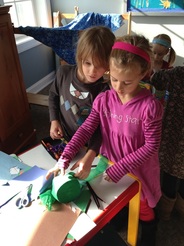

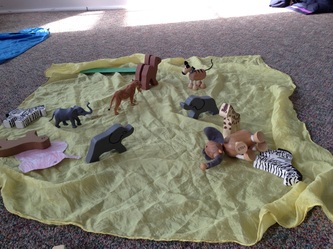

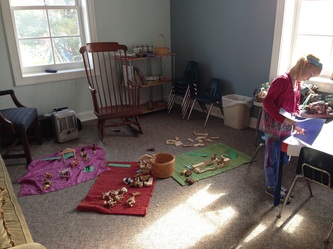

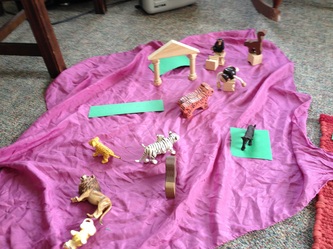
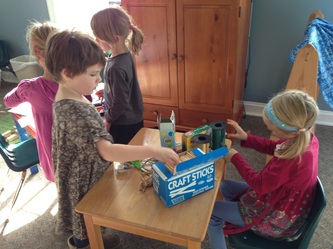
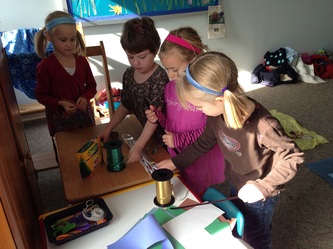



 RSS Feed
RSS Feed